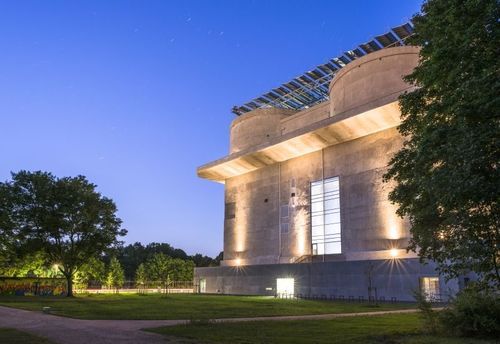Bentley may not yet have a hybrid or a PHEV in its luxurious lineup, but it is now building its cars with lots of green, rooftop-sourced, energy. The solar panel project includes over 20,000 solar panels installed on the top of Bentley’s Crewe installations, the biggest of its kind in the UK.
The Bentley factory is where the brand’s three main model lines – Continental, Flying Spur and Mulsanne – are manufactured. “The solar panels have generated over 2,200,000 kilowatt-hour’s of energy since its installation in March, having a hugely positive impact on the efficiency and sustainability of our manufacturing operations,” said Michael Straughan, Bentley’s Member of the Board for Manufacturing. “We’re very proud of the project and so are delighted to welcome Greg Barker to the factory and share the information behind that success.”
 A massive German air raid bunker, which had been derelict for several decades, now hosts a regenerative power plant supplying the surrounding area with green energy. The project is part of the “Renewable Wilhelmsburg” climate protection scheme, which aims to provide the 50,000 Wilhelmsburg residents with CO2-neutral electricity by 2025 and with climate-neutral heating by 2050.
A massive German air raid bunker, which had been derelict for several decades, now hosts a regenerative power plant supplying the surrounding area with green energy. The project is part of the “Renewable Wilhelmsburg” climate protection scheme, which aims to provide the 50,000 Wilhelmsburg residents with CO2-neutral electricity by 2025 and with climate-neutral heating by 2050. Designers also can drill down and analyze wall, roof and floor assemblies.
Designers also can drill down and analyze wall, roof and floor assemblies.
